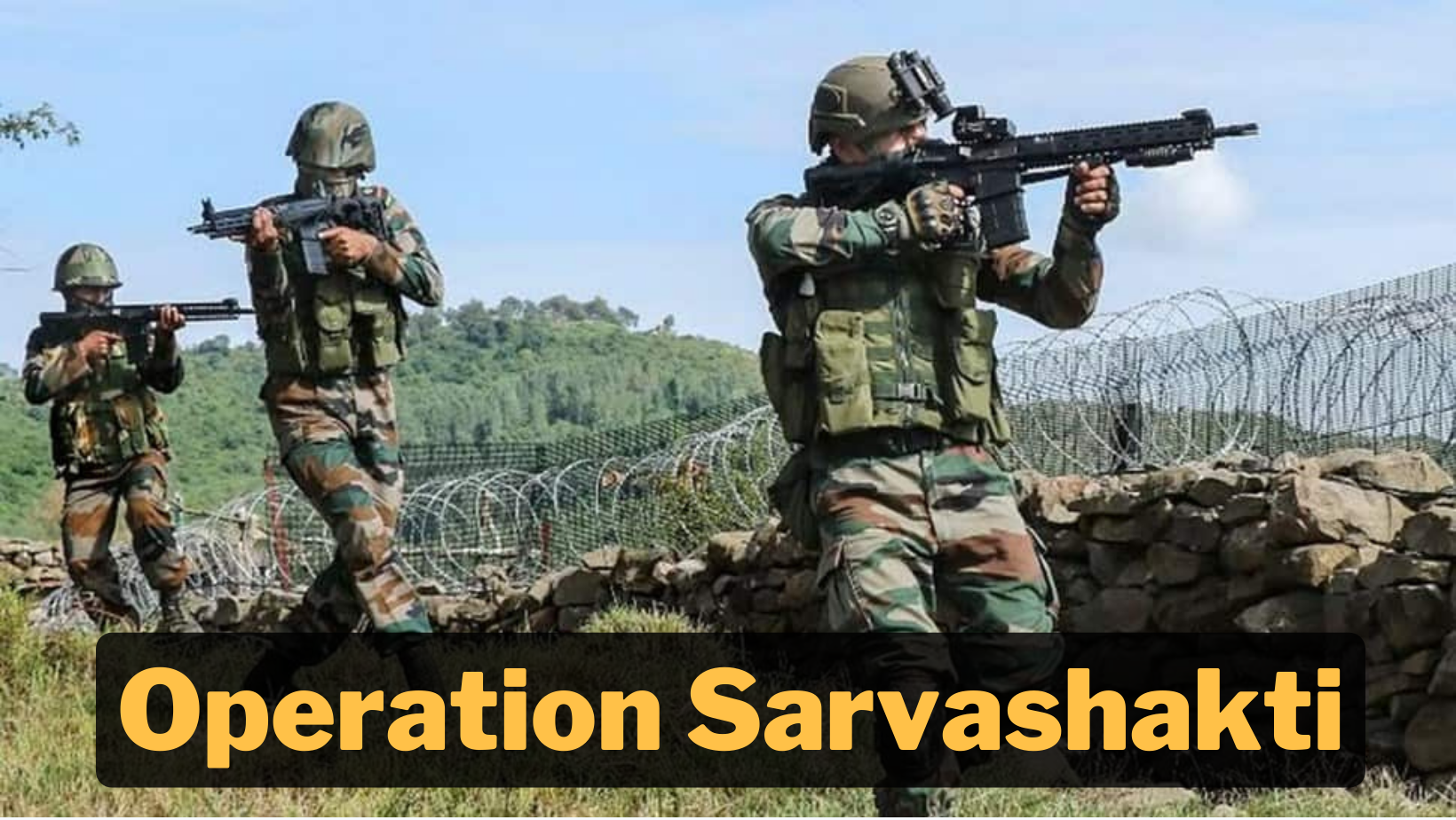As Army launches Op Sarvashakti, recalling Sarpvinash of 2003, that crushed terror base in Pir Panjal (Indian Express)

- 25 Jan 2024
Why is it in the News?
The Army has launched Operation Sarvashakti in the Rajouri-Poonch sector of Jammu and Kashmir, deploying forces on both sides of the Pir Panjal range to target terrorists who have carried out a series of attacks on troops in the area.
What is Operation Sarvashakti?
- In a bid to combat increasing terrorist activities in Jammu and Kashmir, the Army has initiated Operation Sarvashakti, under which terrorists operating on both sides of the Pir Panjal mountain ranges in the Union Territory will be neutralised.
- There were three major attacks on the security forces in 2023, and over the past few years, 20 soldiers have been killed in terrorist ambushes in this area.
- Operation Sarvashakti, as part of which at least three brigades of additional troops are being deployed in the sector from various reserve and strike corps formations in order to increase the density of troops and, therefore, the likelihood of contact with terrorists, recalls an earlier operation by the Army in the same forests more than two decades ago.
- Back in 2003, Indian forces launched Operation Sarpvinash to flush out terrorists who had infiltrated from across the border and set up camps in the thick forests south of the Pir Panjal range, especially in the Hilkaka area in Poonch.
What was Operation Sarpvinash?
- Operation Sarpvinash, launched in April 2003, marked a significant counter-insurgency effort in Jammu and Kashmir.
- In response to intelligence indicating over 300 foreign terrorists establishing secure camps in Surankote and Hilkaka post-infiltration across the Line of Control (LoC), the three-month-long operation involved 10,000 troops in a challenging 150 sq km area.
- Employing helicopters and ground forces, the operation neutralized approximately 100 terrorists, dismantled bunkers, and recovered weapons, explosives, and supplies.
- Operation Sarpvinash successfully restored peace to the region until 2017-18, impacting the region's security dynamics.
- However, since 2021, there has been a resurgence of high-intensity attacks on security forces in this area.
Why is this area important strategically?
- The areas south of Mendhar leading to the Pir Panjal range through Hilkaka constitute among the shortest routes of access for infiltrators from across the LoC into the Kashmir valley.
- The terrorists chose this region to set up camps because dominating this area can potentially provide a conduit to personnel in the event of a military operation by the Pakistanis, and easier infiltration of terrorists.
- The dense forests and steep mountain slopes offer both adequate cover and visual domination of the area.
- Terrorists were able to merge with the foliage whenever Indian troops carried out searches in the area and inflicted casualties in case of contact.
- All of these locational advantages for terrorists remain intact to some degree even now.
